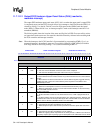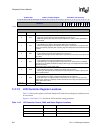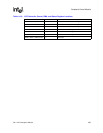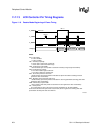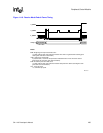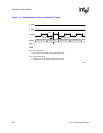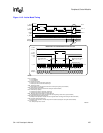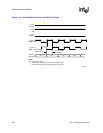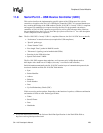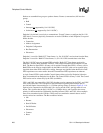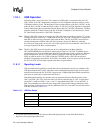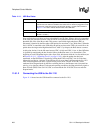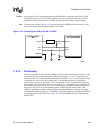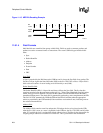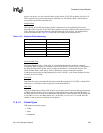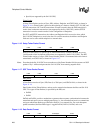
SA-1110 Developer’s Manual 259
Peripheral Control Module
11.8 Serial Port 0 – USB Device Controller (UDC)
This section describes the implementation-specific options of the USB protocol for a device
controller as it applies to the SA-1110’s USB Device Controller (UDC). It is assumed that the user
has a working knowledge of the USB standard. The SA-1110 UDC is “mostly” USB 1.1 compliant
and supports all standard device requests issued by the Host. For programmer convenience,
summaries of SA-1110 UDC operation are provided as well as quick reference tables. However,
the user should refer to the Universal Serial Bus Specification, Revision 1.1
1
for a full description
of the USB protocol and its operation.
Note: The SA-1110 UDC is "mostly" USB 1.1 compliant. However, the SA-1110 UDC does not
handle:
• “Isochronous” transaction format (not required for USB compliance)
• "Special" packet type
• “Frame Number” field
• Zero-length “Data” packet for Bulk IN transfer
• "Disconnect" signaling (can be handled with GPIOs)
• Powering by the USB cable alone
• Speeds slower than 12-MHz
The SA-1110 UDC supports three endpoints, and it operates only in High Speed mode at
half-duplex with a baud rate of 12 Mbps (slave only - not a Host or hub controller).
Serial information transmitted by the SA-1110 UDC contains layers of communication protocols, the
most basic of which are fields. SA-1110 UDC fields include:
• Sync
• Packet Identifier
• Address
• Endpoint
• Frame Number
• Data
• Cyclical Redundancy Check (CRC)
Fields are used to produce packets. Depending on the function of a packet, a different combination
and number of fields are used. Packet types include:
• Token
• Start Of Frame
• Data
• Handshake
1. Access the most recent revision of the Universal Serial Bus Specification via the World Wide Web at:
http://www.usb.org/developers/docs.html



